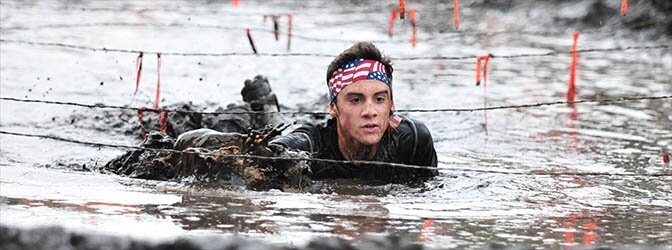






Is NASCAR Racing in the Rain? Rules Explained
When you think of NASCAR, you probably picture cars barreling around tracks under ideal conditions, but what happens when the rain starts falling? You might be surprised to learn that officials have specific rules and even specialized equipment for these wet scenarios. The decision to race when the weather turns tricky isn’t simple, and there’s a lot at stake for teams and drivers. So what actually changes when NASCAR faces rain?
NASCAR’s Rain Protocols and Track Safety Measures
NASCAR implements a structured set of protocols to ensure safety when weather conditions become unfavorable, particularly in the event of rain. The race directors are responsible for evaluating the track's condition and may designate a “wet” or “damp” start, which informs teams whether rain tires are required or merely optional for the race.
In the Cup Series, specific allocations of rain tires are provided to teams, aimed at optimizing performance during rainy conditions.
Additionally, the presence of lightning in the vicinity necessitates immediate safety measures, resulting in the suspension of all on-track activities until the threat has passed.
The overarching priority of NASCAR is track safety, and the decision to resume racing or to officially end the event rests solely with the officials.
This structured approach highlights the organization's commitment to ensuring the safety of drivers, crews, and spectators during inclement weather.
How Wet-Weather Tires Work in NASCAR
While NASCAR primarily utilizes slick tires to optimize speed and traction on dry surfaces, the use of wet-weather tires becomes critical in rainy conditions. When race officials announce a "wet start," teams across the NASCAR Cup Series, Xfinity Series, and Camping World Trucks are required to switch to specially designed treaded wet-weather tires. These tires are identifiable by their white lettering and are engineered to provide enhanced grip on wet surfaces.
In addition to changing tires, participating cars must activate rear flashing lights to increase visibility for all drivers during adverse weather conditions.
The regulations permit a limited number of sets of wet-weather tires for each series, requiring teams to strategically manage their tire allocation to ensure adequate traction and safety throughout the race. This strategic use of wet-weather tires is crucial for maintaining competitive performance while adhering to safety protocols in wet conditions.
Key Differences Between Slicks and Rain Tires
NASCAR races often encounter both dry and wet track conditions, making it important to differentiate between slick tires and rain tires.
Slick tires, which are utilized in the Cup Series for dry racing, have a smooth surface without a tread pattern, allowing for maximum grip and traction on dry asphalt.
However, these slick tires aren't suitable for wet conditions, as they can lose grip and easily hydroplane on rain-soaked surfaces.
In contrast, NASCAR rain tires are designed with distinct grooves and white sidewall lettering, which serve to channel water away from the tire.
This design enhances grip and stability when racing on wet tracks, thereby allowing drivers to maintain better control.
The use of treaded rain tires is critical in wet racing scenarios, as they significantly improve traction compared to slick tires, which would otherwise be ineffective and increase the risk of accidents.
In summary, understanding the functional differences between slick tires and rain tires is essential for effective performance in varying track conditions.
Utilizing the appropriate tire type is crucial for maintaining safety and competitive performance during races.
Wet Race Start Procedures and Team Choices
In the event of rain prior to a NASCAR race, officials have the option to declare a "wet" or "damp" start based on the prevailing conditions.
In a wet start, competitors must utilize rain tires, which are distinguishable by their tread patterns and white lettering. It's also mandatory to activate rear flashing lights during this scenario. Failure to comply with these regulations during pace laps can result in the forfeiture of a driver's starting position.
Conversely, a damp start allows teams to make strategic decisions regarding tire selection, as the track conditions may permit the use of either rain tires or slick tires. This decision is influenced by various factors, including the amount of standing water and the overall grip level of the track.
During the qualifying and practice sessions of the Cup Series, teams are allocated three sets of rain tires, making effective management of these tire sets essential in optimizing performance.
In essence, understanding the implications of wet and damp starts is crucial for teams and drivers as they navigate the uncertainty of changing weather conditions. The ability to make informed decisions regarding tire choice can significantly impact race outcomes.
Impact of Rain on Race Strategy and Scheduling
When rain impacts a NASCAR event, it significantly influences both race strategy and scheduling. Teams must remain vigilant, continuously monitoring weather updates to make timely decisions regarding tire selections between rain tires and slicks, adapting to the changing track conditions.
Visibility can be compromised during rain, and there's an increased risk of hydroplaning, resulting in necessary adjustments to pit stop strategies.
Furthermore, the allocation of rain tires is limited, requiring teams to plan their tire usage carefully to ensure they've adequate options throughout the event.
Race disruptions, such as delays or stoppages caused by heavy rain or lightning, can severely affect pre-established race strategies and scheduling.
NASCAR guidelines necessitate a flexible approach, as teams need to be ready for potential race shortening should weather conditions deteriorate unexpectedly.
Notable Rain-Affected NASCAR Races Through History
NASCAR, while traditionally associated with clear weather, has experienced significant moments influenced by rain throughout its history. One of the earliest examples occurred in 1956 at Road America, where rain played a crucial role in the race, ultimately allowing Tim Flock to secure victory under challenging conditions.
More recently, the 2020 Charlotte ROVAL made a notable shift with the use of wet-weather tires, marking a new strategy in dealing with rain-affected conditions.
In 2021, Chase Elliott demonstrated skill on a rain-impacted Circuit of the Americas, although the race was ultimately shortened due to the weather. Additionally, in 2022 at Watkins Glen, Kyle Larson emerged victorious after facing rain delays that interrupted the event.
Moreover, the 2023 All-Star Race at North Wilkesboro highlighted the adaptation of NASCAR to wet conditions by utilizing rain tires on an oval track.
These instances illustrate how rain has influenced race outcomes and prompted NASCAR to refine its approach to varying weather conditions, emphasizing the importance of preparation and strategy in all elements of racing.
Recent Innovations and Rule Changes for Wet Conditions
As rain has increasingly influenced race outcomes and strategies, NASCAR's response to wet conditions has evolved to become more proactive and systematic.
Since 2008, the official implementation of wet-weather tires has been a significant advancement, with their usage extended to various tracks, including select ovals such as Richmond and Phoenix. The regulations allow teams the flexibility to switch between wet and dry tires during natural cautions, thereby facilitating more strategic decision-making during rain-affected races.
Additionally, rule modifications have been enacted to permit the continuation of races or their completion if a sufficient number of laps have been completed, thereby upholding competitive integrity.
These recent developments highlight a concerted effort by NASCAR to refine its weather protocols in response to changing race conditions.
Oval vs. Road Course Rain Racing Guidelines
NASCAR's regulations for rain racing are contingent upon the type of track involved—either an oval or a road course.
On road courses, the governing body requires the use of wet-weather tires at the onset of a wet race. During conditions classified as “damp,” teams have the flexibility to select their tire choice from a specified set of options. Additionally, there are prescribed tire allotments set for various phases of the race weekend.
Conversely, on oval tracks, NASCAR has instituted new regulations that permit rain racing with wet-weather tires. However, tire changes are restricted to periods of natural caution, which means teams must strategize their tire management with these limitations in mind.
Regardless of the track type, NASCAR emphasizes safety across all events. Should lightning be detected within an eight-mile radius of the venue, all racing activities are suspended for a mandatory 30 minutes.
This protocol is implemented to ensure the safety of drivers, crew members, and officials, demonstrating NASCAR's commitment to prioritizing safety during inclement weather conditions.
Safety Concerns for Drivers and Track Staff in Wet Weather
Wet weather conditions pose significant risks for both drivers and track staff during racing events. The presence of rain can lead to dangerous situations such as hydroplaning, where vehicles lose traction on the water covering the track, as well as reduced visibility, which complicates driving and increases the likelihood of accidents.
To mitigate these hazards, NASCAR employs special wet-weather tires designed with tread patterns that enhance grip on wet surfaces. Unlike slick tires, which aren't suited for handling standing water, these tires provide better performance under rainy conditions.
Established protocols are in place for tire changes in response to varying weather circumstances. In cases where lightning is detected in the vicinity or when water seeps through the track as "weepers," races may be temporarily halted to prioritize the safety of all individuals present.
These measures are taken to uphold safety standards while maintaining the integrity of the competition during adverse weather. Adhering to these procedures is essential to ensure the protection of drivers and track personnel throughout the event.
Financial and Logistical Challenges of Rain Delays
Rain interruptions during NASCAR races lead to significant financial and logistical challenges for many stakeholders involved. For track owners, rain delays can result in increased operational costs, as they must manage the availability of workers and re-coordinate the event logistics. This includes ensuring that staff are available during unpredictable weather conditions, which can strain budgets and resources.
Vendors also experience adverse effects during rain delays. Sales can significantly decline as attendance drops and the inclement weather discourages on-site purchases. Additionally, rain delays can impact existing advertising contracts, as the visibility and effectiveness of advertisements may be diminished due to fewer attendees.
Logistical difficulties arise as event organizers must address a variety of issues, such as rescheduling staff, processing refunds, and accommodating ticket holders who may incur additional travel or accommodation expenses. These factors can lead to negative perceptions of the event, potentially influencing future attendance and participation rates.
Ultimately, while the priority remains on ensuring the safety of participants and spectators, the financial and logistical ramifications of rain delays require careful management and planning. All involved parties need to navigate these disruptions with an eye toward minimizing impacts and maintaining engagement with their audience.
Conclusion
When you watch NASCAR race in the rain, you’re witnessing a team effort on adaptability and safety. The rules, wet-weather tires, and clear protocols keep drivers safe while letting competition thrive—even when the skies open up. You’ll notice that every decision, from tire choice to light activation, is about minimizing risk without losing the excitement. As the sport evolves, you can expect NASCAR to keep refining its rain racing approach for safety and thrilling finishes.

























